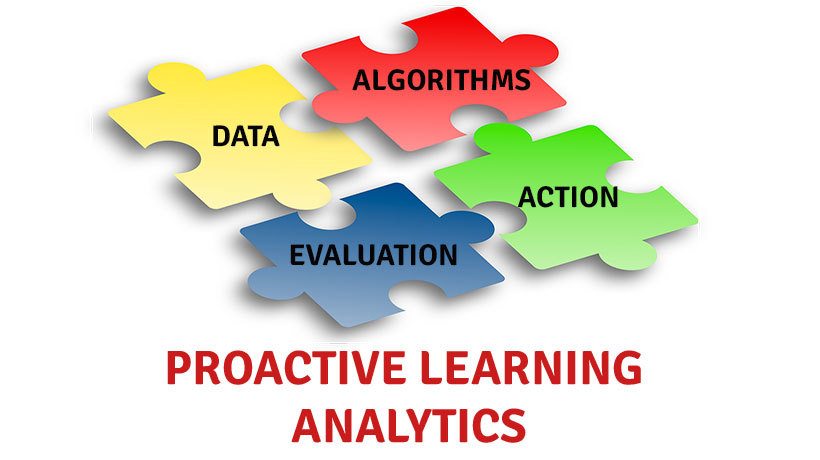How To Apply Proactive Learning In Online Training
The terms ‘proactive’ and ‘reactive’ may sound like equally meaningless buzzwords to younger generations. The typical assumption is to class millennials as both proactive and reactive. They explore new approaches to work, which makes them unconventional. And in many ways, this break from tradition paints them as proactive. On the other hand, they’re quick to Google, sometimes mid-conversation, which labels them as reactive. How do these two concepts apply to online training?
1. Proactive Vs Reactive
In the corporate eLearning context, the proactive approach is about making the first move. It refers to a trainee’s desire to seek out information. They actively want to acquire knowledge, so they look for relevant material. This interest will keep them more engaged in their online training. It will increase retention and improve overall performance, which leads to better ROI.
On the other hand, reactive learning comes after the fact. It’s learning driven by necessity. Reactive training programs are a response to a given situation. For example, compliance online training is a form of reactive learning because it’s driven by regulation. Your team only educates themselves to avoid fines and maintain their legal ability to work. They might not be interested in the content at all. Practically speaking, an example of proactive learning is to acquire a new language. You might learn French or Spanish because you know it makes you more employable. On the other hand, you might hear that your office is opening a new branch in Spain or France. You could then enroll in a language course to raise your placement chances. That’s reactive.
2. Recognition In Public
Knowledge is never retained if it’s not backed up with periodic refreshers. Designing eLearning experiences for adult learners requires an incentive-based strategy that rewards them for their efforts instead of publicly shaming them for incorrect answers or failing to complete the online training course in the time allotted.
3. The Importance Of Contextualizing
Another element of reactive thinking is that it’s momentary. You might find a new word in an article and Google its definition. Chances are you will now understand the article, but five minutes later, you’ll forget the word. If you saw it again the next day, you’d have to look it up. But if you make an active decision to improve your vocabulary, your approach will be different. You might pick a new word every day and actively use it in the course of conversation. This entrenches your new word in your mind. Do this every day and by the time a week is gone, you have an arsenal of new words. It improves your communication.
Reactive thinking is often fact-based because it may not have context. It’s focused on achieving a specific aim that’s often short-term. Proactive thinking is knowledge-based. You can help corporate learners adopt this approach by instilling real-world value in your online training content, so provide them with contextual knowledge they can use in their everyday lives.
4. Practicality Vs Theory
Theoretical knowledge is helpful for passing compliance exams. But there’s no incentive to remember what you’ve learned after you get an online training certification. If you’d like your compliance online training to be proactive, include real-time scenarios. Develop questions that require actual thought as opposed to yes/no or true/false answers. Let’s look at an example. If you’re teaching ethics, you will probably tell your team that they shouldn’t accept gifts from customers. In this case, the reactive approach would be to tell corporate learners not to take bribes from customers. However, if you make them think about it, they’re more likely to comply. For instance, show a corporate learner that accepting a birthday present may be seen as a bribe. Explain that it creates a bias. It warms them toward the gift giver, so they’re more likely to favor them. Explore different ways that a ‘bribe’ may be framed. The customer could pay the bill at a company dinner, or send you tickets to a game.
5. Proactivity Leads To Lifelong Learning
One of the most notable benefits of proactive learning is that it becomes a habit. Employees are more likely to seek out answers on their own and get a head start on their training instead of waiting for a problem to arise and then trying to remedy the situation. This encourages ongoing training through self-guided studies. Employees begin to understand the importance of taking the initiative and expanding their own expertise without being prompted. For example, before they must face negative repercussions due to lack of participation or a significant skill gap.
Proactive training is inspired by an employee’s desire to learn something new. Reactive training is mandatory. They have to know, but they don’t necessarily want to know. If they deliberately seek knowledge, they are more likely to remember and apply it. Mature learners respond better to reward than punishment. Incorporate this into their online training, and use it to develop their reasoning skills. Instead of relying on theory, use context, case studies, and simulations to draw out practical uses the can apply on the floor.
Do adults learn in the same way as their younger counterparts? Or do they need their own special approach to absorb the information? Do you know what your adult learners need to achieve their goals and tackle everyday challenges? Download our free eBook Designing eLearning Courses For Adult Learners: The Complete Guide to find out about the adult learner characteristics, the obstacles they need to overcome, ways to engage and motivate busy adult learners, and some amazing adult learning facts and stats you need to know as an eLearning pro.









